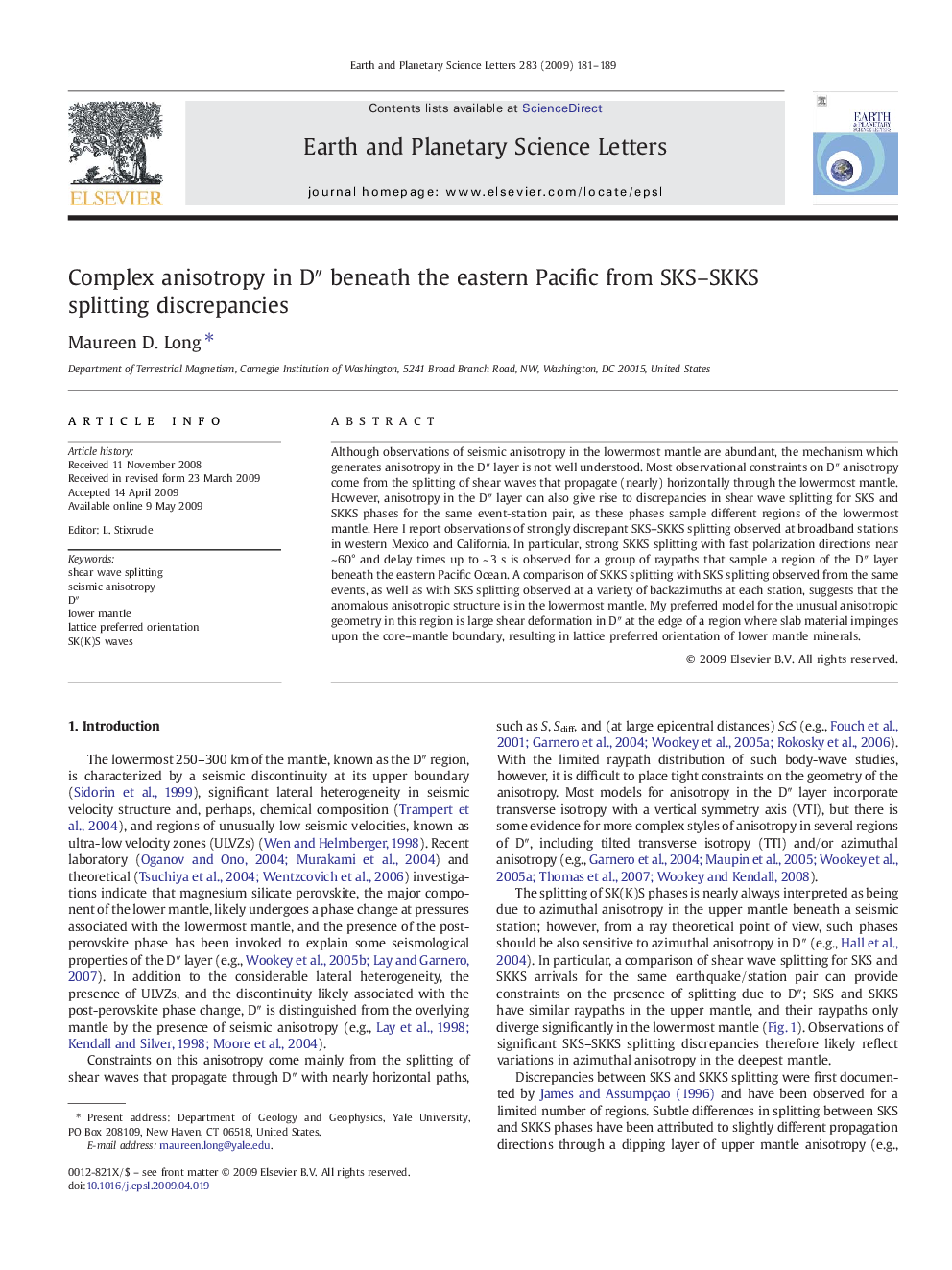| Article ID | Journal | Published Year | Pages | File Type |
|---|---|---|---|---|
| 4679038 | Earth and Planetary Science Letters | 2009 | 9 Pages |
Abstract
Although observations of seismic anisotropy in the lowermost mantle are abundant, the mechanism which generates anisotropy in the DⳠlayer is not well understood. Most observational constraints on DⳠanisotropy come from the splitting of shear waves that propagate (nearly) horizontally through the lowermost mantle. However, anisotropy in the DⳠlayer can also give rise to discrepancies in shear wave splitting for SKS and SKKS phases for the same event-station pair, as these phases sample different regions of the lowermost mantle. Here I report observations of strongly discrepant SKS-SKKS splitting observed at broadband stations in western Mexico and California. In particular, strong SKKS splitting with fast polarization directions near ~ 60° and delay times up to ~ 3 s is observed for a group of raypaths that sample a region of the DⳠlayer beneath the eastern Pacific Ocean. A comparison of SKKS splitting with SKS splitting observed from the same events, as well as with SKS splitting observed at a variety of backazimuths at each station, suggests that the anomalous anisotropic structure is in the lowermost mantle. My preferred model for the unusual anisotropic geometry in this region is large shear deformation in DⳠat the edge of a region where slab material impinges upon the core-mantle boundary, resulting in lattice preferred orientation of lower mantle minerals.
Related Topics
Physical Sciences and Engineering
Earth and Planetary Sciences
Earth and Planetary Sciences (General)
Authors
Maureen D. Long,
